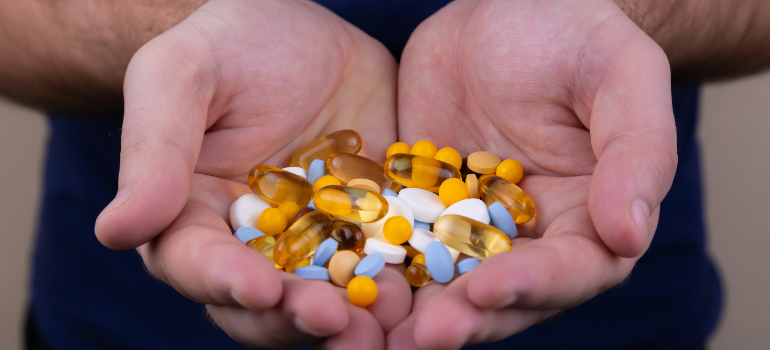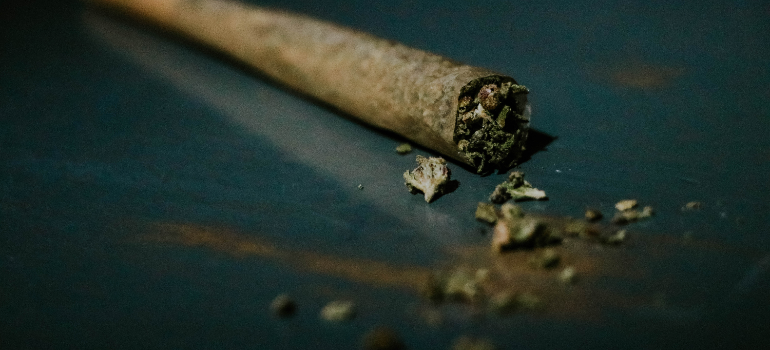The need to discuss how recreational drug use turns into addiction often gets brushed aside, with many believing it’s a concern for someone else. In our society, casual substance use can be celebrated, glamorized, or seen as a rite of passage. But lurking beneath the surface of short-lived euphoria and social bonding is a potential journey from occasional use to a life-altering addiction. The progression isn’t linear or identical for everyone, but grasping how and why recreational drug use can escalate is crucial for prevention, awareness, and intervention. Let’s explore the intricate web of substance use and the forces that can pull individuals into the grips of addiction.
Definition of Recreational Drug Use and Addiction
Recreational drug use describes the occasional or infrequent consumption of a substance without medical justification. Typically, people turn to these drugs to relax, escape, or simply experience something new. However, it’s a fine line between casual use and addiction. Addiction represents a chronic disease where one compulsively seeks and uses drugs despite harmful consequences. Understanding this difference is crucial.
At our West Virginia treatment center, experts often see the stark shift from casual use to dependence. Their observations underscore the importance of early awareness and education. It’s not merely about willpower; addiction involves brain changes that challenge an individual’s ability to abstain. Recognizing the definitions helps pave the way for informed decisions and proactive interventions.
Understanding Drug Use Progression
Most journeys into the world of drugs start with experimentation. This phase, driven by curiosity or social influences, might involve trying a substance at a party or with friends. Peer pressure or simple intrigue can be powerful initiators.
Then comes the regular use. Not everyone who experiments will proceed to this stage, but many do. Here, individuals might use drugs for pleasure, relaxation, or as an escape mechanism from life’s stresses. This phase isn’t necessarily addiction, but the risks begin to amplify.
Over time, some users enter the realm of increased consumption. The body starts adapting, building a tolerance. To achieve the same high or relaxation they once felt, they might consume more. This stage can be deceptive, making users believe they’re in control when they’re actually inching closer to a problematic relationship with the drug.
The final and most concerning phase is preoccupation and craving. The neurobiology of drug addiction is quite fascinating. Here, the line blurs between want and need. Drug-seeking behavior becomes more compulsive, often overriding personal values or responsibilities. It’s no longer just about pleasure or relaxation; it’s about satisfying an intense craving.

Why Recreational Use Shifts to Addiction?
Addiction isn’t merely a result of frequent drug use. Let’s break down these contributors.
Biological Factors:
- Genetic predisposition to addiction: Genetics can play a role, making some more susceptible to addiction than others.
- Neurochemical changes: Over time, drugs can alter the brain’s reward system, pushing individuals closer to addiction.
Psychological Factors:
- Co-occurring mental health disorders: Conditions like depression or anxiety can make one more vulnerable to substance dependence.
- Coping mechanisms: Often, individuals use drugs as an escape from emotional challenges or stress, leading to increased dependency.
Social Factors:
- Peer pressure and social circles: Being in an environment where drug use is frequent can influence one’s choices.
- Environment and availability: Easy access to drugs can amplify the risk of regular consumption and eventual addiction.

Grasping these underlying factors provides insight into the transition from casual use to addiction, emphasizing the need for early intervention and a holistic approach to prevention.
Marijuana Use and Risks Beyond the Legalization
Legalization has transformed marijuana’s image, with many viewing it as harmless. Yet, it’s essential to dissect the nuances. One significant consideration is the THC content, the primary psychoactive component in marijuana. Over the years, THC levels in marijuana have risen. Higher THC content can increase the risk of addiction and potentiate adverse side effects.
Another concept to ponder is the gateway theory. It proposes that marijuana use can lead to the consumption of harder drugs. While debated, some research suggests a connection between early marijuana use and later substance abuse.
A marijuana rehab center often encounters cases where individuals underestimate the drug’s addictive potential. These centers highlight the importance of informed decisions and staying aware of marijuana’s underlying risks. Despite its legal status in many regions, caution and education remain paramount.

The Slippery Slope of Cocaine Use
Cocaine, often dubbed the “party drug,” offers users pleasurable effects and a burst of euphoria. However, this high is notoriously short-lived. As individuals chase that initial feeling of elation, they often consume escalating doses. This vicious cycle leads to diminishing rewards; more of the drug is needed for less of the high.
As the body and mind get acclimated to cocaine, dependence grows. This progression is apparent when cravings set in. Once someone stops using, they might experience intense withdrawal symptoms. These can range from fatigue and irritability to more severe physical reactions.
When recreational use evolves into a gripping dependency, it’s essential to seek assistance at a cocaine addiction treatment center. Such centers provide insights, tools, and strategies to break free from cocaine’s grasp and reclaim a healthier life.
The Double-Edged Sword of Prescription Drugs: Ambien and Benzodiazepines
Prescription drugs like Ambien and benzodiazepines hold a legitimate place in medical treatment. Doctors often prescribe Ambien for sleep disorders and benzodiazepines for anxiety or panic attacks. However, there’s a thin line between therapeutic use and misuse. Recreational drug use turns into addiction very quickly and easily.
Ambien, known for its sedative properties, can lead to dependency when used outside its prescribed guidelines. Over time, those in need might find sleep elusive without it, prompting a cycle of increasing dosage. An Ambien addiction treatment becomes essential when the drug takes precedence over natural sleep-inducing methods.
Benzodiazepines, or “benzos”, also have sedative effects. While they can bring solace to those battling anxiety, extended misuse can pave the way for dependence. The tranquil calm they offer becomes a crutch, and over-reliance makes discontinuation challenging.
Stopping the intake of either drug can bring about withdrawal symptoms. For Ambien, users might experience rebound insomnia. In the case of benzos, withdrawal can be even more severe, encompassing symptoms like seizures, intense anxiety, and physical discomfort. This reality underscores the value of a benzo addiction treatment for those ensnared in the grip of dependency.
The Power of Motivational Interviewing in Addiction Recovery
When confronting substance dependency, the journey toward recovery often starts from within. This is where motivational interviewing for substance abuse comes into play. A collaborative, client-centered approach, motivational interviewing seeks to spark and harness the internal motivation someone needs to change their behavior.
The core principles of Motivational Interviewing are:
- Expressing empathy towards clients
- Developing discrepancies between clients’ behaviors and their personal goals
- Going with the flow of resistance rather than opposing it directly
- Empowering the client, reinforcing their belief in their ability to change
Motivational interviewing shines in enhancing intrinsic motivation. It isn’t about telling someone what to do. Instead, it’s about helping them discover their reasons for change, facilitating their journey toward a substance-free life.
However, ambivalence is common. Many wrestle with conflicting feelings about their substance use. Motivational interviewing helps navigate this ambivalence, addressing resistance and ensuring that the decision to seek treatment truly resonates with the individual’s personal values and aspirations.
Situations when Motivational Interviewing can aid:
- Overcoming denial or minimization of drug misuse
- Bridging the gap between recognizing a problem and taking action
- Finding personal reasons to break the cycle and not see recreational drug use turn into addiction
- Building a robust, resilient mindset to ward off potential relapses

Interventions and Treatments
When battling substance dependency, early identification is paramount. Recognizing signs before they intensify allows for timely interventions and proactive prevention strategies. By doing so, individuals often sidestep deeper entrenchment into addiction.
Seeking professional help makes a tangible difference. Different forms of therapy, including cognitive-behavioral, group, and individual counseling, offer tailored approaches to address the unique challenges each person faces. Therapy empowers those in need, equipping them with coping skills and strategies to navigate their recovery journey.
Beyond counseling, certain substances necessitate medical interventions. Detoxification becomes vital, especially for drugs with severe withdrawal symptoms. Detox ensures a safe environment for individuals as their body purges the substance, all while medical professionals monitor and manage potential complications.
Navigating the Waters of Relapse
Recovery from substance addiction is an uphill battle, and understanding the cycle of relapse is crucial. Triggers, often stemming from situations or emotions, can swiftly pull someone back into old habits. High-risk situations, like a party where substances are available, amplify the challenge.
Recognizing warning signs is the first line of defense. Feelings of intense craving, shifts in mood, or reconnecting with old, unhealthy friendships can signal danger. Equipped with the right coping strategies, such as deep breathing exercises, distraction techniques, or reaching out to a trusted friend, one can thwart the onset of a relapse.
Yet, the journey doesn’t end there. Consistent support plays a pivotal role. Many find solace at a drug rehab in WV, where tailored relapse prevention plans guide them. These plans, paired with continuous counseling, ensure that individuals remain steadfast in their commitment to sobriety.

Empowering Healing Through Knowledge
Knowledge is power. Educating individuals about the risks and implications enables informed decision-making. When people understand the potential repercussions, they’re better equipped to make choices that prioritize their well-being.
However, understanding the disease of addiction goes beyond recognizing risks. Myths and misconceptions, unfortunately, run rampant. Many believe that addiction is a mere lack of willpower or that only certain “types” of people get addicted. By dispelling such misconceptions, society can foster empathy and support for those grappling with addiction.
Proper education shines a light on the true nature of addiction, demystifying it and replacing stigmas with compassion. When communities are informed, they become safer, more supportive spaces for everyone, especially those on the journey to recovery.
A Walk Toward a Brighter Tomorrow With Harmony
The path from recreational drug use to dependency isn’t always linear, and it’s influenced by a myriad of factors, both internal and external. We’ve explored how curiosity or casual usage can, for some, evolve into a deep-seated addiction. We’ve also spotlighted the importance of early intervention, ongoing support, and the power of informed decision-making.
But the most crucial takeaway is this: understanding is the first step toward compassion and effective intervention. As society becomes more informed about how recreational drug use turns into addiction, we can hope for a future where both prevention and recovery are more attainable for all. To help you on that journey, contact us and let us guide you.



